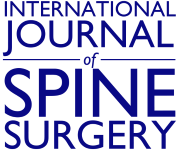Article Figures & Data
Tables
NSQIP Calculator Predicted Variables 1. Serious complication 2. Any complication a 3. Pneumonia 4. Cardiac complication a 5. Surgical site infection a 6. Urinary tract infection a 7. Venous thromboembolism 8. Renal failure 9. Readmission 10. Return to OR a 11. Death a 12. Discharge to nursing or rehabilitation facility 13. Length of stay a ↵a Indicates variables were shared between the 2 cohorts.
NSQIP, National Surgical Quality Improvement Program; OR, operating room.
- Table 2
Distribution of patients in the single center database (Quality) and the National Surgical Quality Improvement Program.
Patient Characteristics Quality (n = 1606) NSQIP (n = 58,790) Distribution Distribution Age, y 48.6 ± 23.6 57.3 ± 13.1 Sex, women 63.8% 51.8% Body mass index 25.8 ± 6.8 30.5 Ascites 1.1% <0.01% Sepsis 1.0% 1.2% Disseminated cancer 3.1% 2.0% Diabetes 5.2% 16.5% Hypertension 15.1% 50.8% COPD 2.8% 4.6% Dialysis 1.2% 0.4% Note: Data presented as % or mean ± SD.
COPD, chronic obstructive pulmonary disease.
- Table 3
Patient actual vs the National Surgical Quality Improvement Program predicted outcomes.
Patient Actual Outcomes Quality (n = 1606) Actual Predicted Brier Score Any complication 16.5% 11.54% 0.01 Cardiac complication 1.9% 0.34% 2.4336 × 10–4 Surgical site infection 1.0% 2.0% 1.08 × 10–4 Urinary tract infection 1.7% 1.6% 1 × 10–8 Return to operating room 2.4% 3.9% 2.25 × 10–4 Death 0.0% 0.28% 7.84 × 10–6 Length of stay, d, mean 6.3 3.5 Patient Outcomes Frail (n = 126) Not Frail (n = 1480) Actual Predicted Brier Score Actual Predicted Brier Score Any complication 71.4% 17.08% 0.37773316 9.4% 11.54% 0.00045796 Cardiac complication 12.7% 0.42% 0.01527696 0.9% 0.34% 0.00003136 Surgical site infection 7.1% 2.7% 0.00126736 0.5% 2.04% 0.00023716 Urinary tract infection 9.5% 2.27% 0.00609961 1.1% 1.69% 0.00003481 Return to operating room 14.3% 5.2% 0.0016 1.4% 3.9% 0.000625 Death 0.0% 0.32% 0.00000784 0.0% 0.28% 0.00000784 Length of stay, d, mean 6.3 3.5 6.3 3.5 - Table 5
The National Surgical Quality Improvement Program calculator predictability by deformed TPA.
Patient Outcomes High TPA (n = 40) Low TPA Actual Predicted Brier Score Actual Predicted Brier Score Any complication 42.5% 8.6% 0.114921 24.6% 11.54% 0.01705636 Cardiac complication 10.0% 0.5% 0.009025 10.0% 0.34% 0.00933156 Surgical site infection 2.5% 1.8% 0.000049 3.3% 2.0% 0.00015876 Urinary tract infection 10.0% 1.4% 0.007396 1.6% 1.6% 8.1E-07 Return to operating room 7.5% 3.3% 0.001764 6.6% 3.9% 0.000729 Death 0 0.0% 0.00000784 0 0.28% 0.00000784 Length of stay, d, mean 8.2 4 6.6 3.5 TPA, T1 pelvic angle.
- Table 6
The National Surgical Quality Improvement Program calculator predictability by deformed PI-LL.
Patient Outcomes High PI-LL (n = 65) Low PI-LL Actual Predicted Brier Score Actual Predicted Brier Score Any complication 38.5% 8.8% 0.088209 24.1% 11.54% 0.01577536 Cardiac complication 4.6% 0.057% 0.00207025 3.6% 0.34% 0.00106276 Surgical site infection 3.1% 1.6% 0.000225 1.8% 2.0% 5.76E-06 Urinary tract infection 7.7% 1.83% 0.00344569 1.8% 1.6% 0.00000121 Return to operating room 7.7% 3.44% 0.001849 5.4% 3.9% 0.000225 Death 0 0.28% 0.00000784 0 0.28% 0.00000784 Length of stay, d, mean 7.4 3.5 6.5 3.5 PI-LL, pelvic incidence minus lumbar lordosis.
- Table 7
The National Surgical Quality Improvement Program predictability of reoperation patients.
Patient Outcomes Quality Reoperation (n = 168) Actual Predicted Brier Score Any complication 28.6% 11.54% 0.02910436 Cardiac complication 3.0% 0.34% 0.00070756 Surgical site infection 4.2% 2.0% 0.00046656 Urinary tract infection 5.4% 1.6% 0.00137641 Return to operating room 6% 3.9% 0.000441 Death 0% 0.28% 0.00000784 Length of stay, d, mean 7.7 3.5
Supplementary Materials
Online Supplemental File 1.






